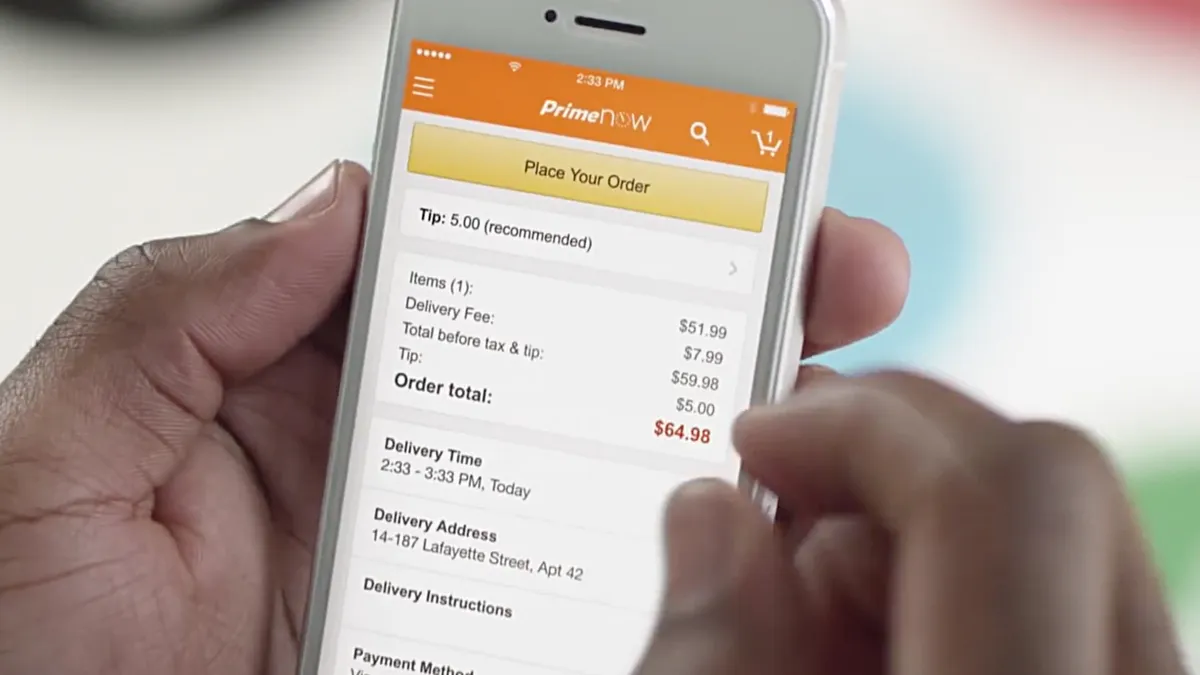Dive Brief:
-
Despite a price hike two years ago, Amazon’s Prime member retention rates have risen from already healthy levels, according to a report by Consumer Intelligence Research Partners (CIRP).
-
Nearly three quarters (73%) of 30-day trial subscribers pay up for a first fully-paid year of Amazon Prime membership, CIRP found. 91% of first-year paid subscribers renew for a second year, and 96% of second-year paid subscribers renew for a third year.
-
Renewal patterns were fairly smooth, CIRP adds, with conversion rates for 30-day free trials declining from the June 2014 quarter through the September 2015 quarter, but improving again through the March 2016 quarter. The conversion rate for one-year members improved steadily from the September 2015 quarter through the March 2016 quarter.
Dive Insight:
Amazon founder/CEO Jeff Bezos in his annual letter to investors this year pledged to build up the Prime membership program until people feel “irresponsible” if they are not members. The CIRP report (which studied 2,108 U.S. consumers who shopped at Amazon between March 2013 and March 2016, and who have or had an Amazon Prime membership at the time of the survey) suggests that many, many people are getting to that point.
Two years ago after hiking its Prime annual fee for the first time since 2005, Amazon seems to be padding its membership with just the right number and scale of benefits to keep renewals humming, CIRP said.
“The impact of the price increase from $79 to $99 for an annual membership announced in March 2014 likely contributed to the lower conversion rate for 30-day free trials, as it made the leap from a free 30-day trial to a full year subscription a little bigger,” CIRP partner/co-founder Mike Levin said in a statement. “When it announced the price increase, Amazon enhanced the benefit mix with a larger library of streaming video, including more original programming, a selection of free e-books, online photo storage, and occasional Prime members-only products and pricing. This contributed to the improved retention rate for customers after the first year of membership.”
Those benefits are also helping Amazon retain members at vulnerable renewal points, according to CIRP partner/co-founder Josh Lowitz.
“With Amazon Prime, Amazon confronts two or possibly three critical moments in retaining members,” Lowitz said. “It needs to persuade 30-day free trials to pay $99 for a full-year membership, and then persuade first-year paid members to renew for a second year. It also needs to persuade second year members to continue a membership, ideally to continue year after year. Customers that join on a 30-day free trial base the decision in part on the free trial experience, and mostly on their expectation of using Amazon Prime over a full year. Customers that finish the first year have more data, and decide whether to pay for a subsequent year based on how much they actually used Amazon Prime during their first full year.”
While Amazon has faced criticism from investors about how much it spends on its shipping and fulfillment and benefits, that has fallen off in recent years as evidence of their effectiveness mounts, and as profits have appeared. Prime's impact on Amazon's bottom line are well documented: Prime members purchase a wide variety of goods from the retailer, and by and large, they come from younger, wealthier households.
In related news, Amazon announced a new deal from billionaire entrepreneur Mark Cuban’s Shark Tank enterprise for its “Amazon Exclusives” line of goods. The Mark Cuban Collection includes more than 100 items from some 20 brands, including Tower Paddleboards, Slyde Handboards, Power Practical and Bottle Breacher. And as the Amazon press release trumpeting the partnership notes, "Amazon Exclusives items are available to Prime members with free two-day shipping through the Fulfillment by Amazon service."















